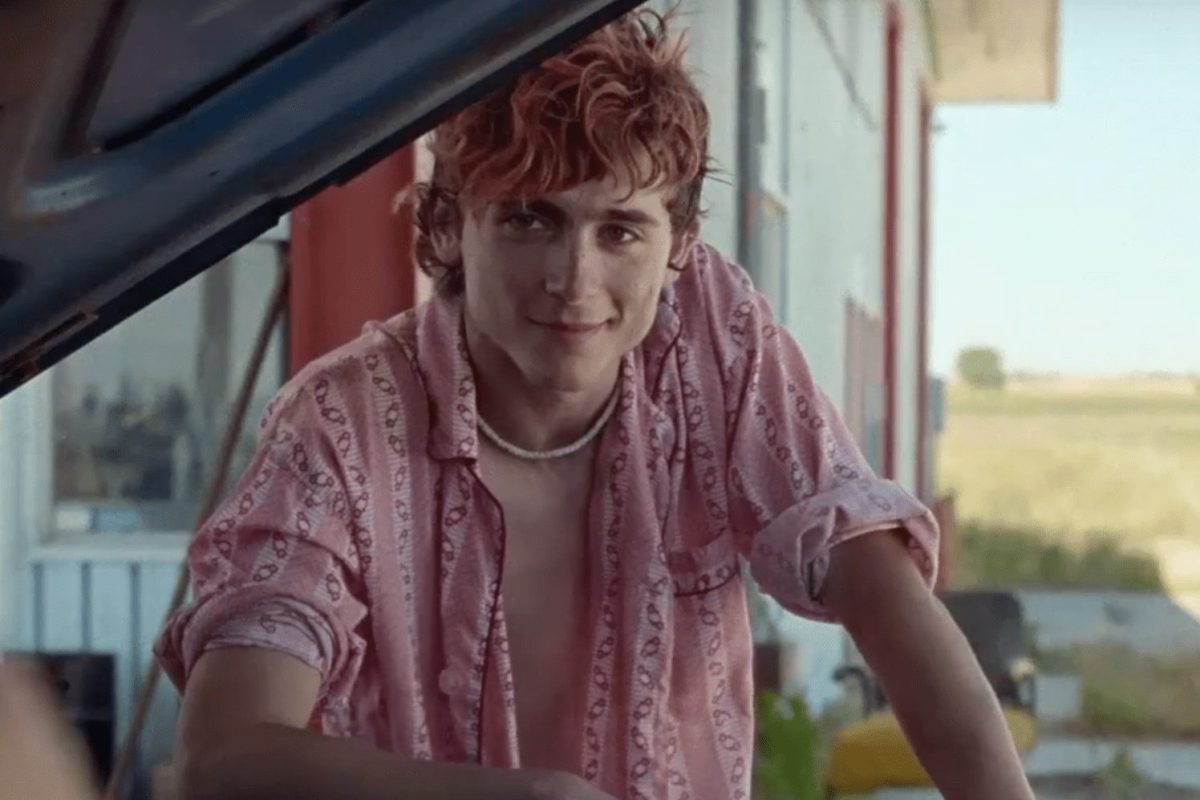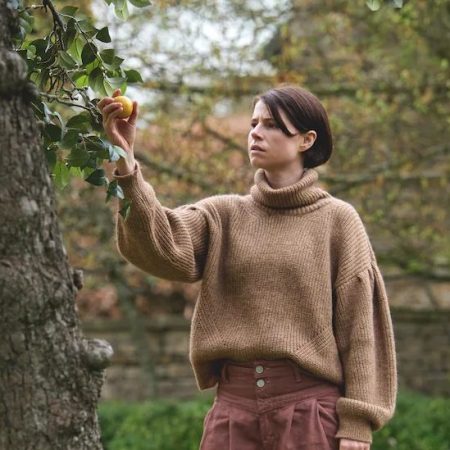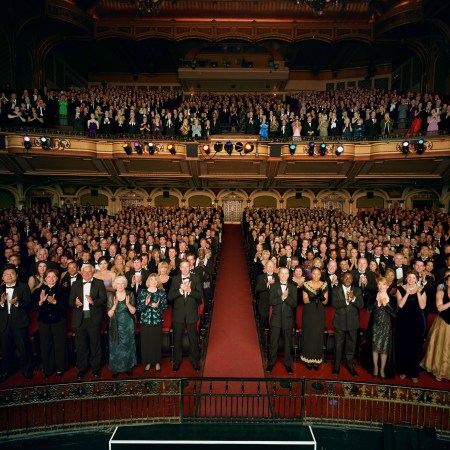Call Me By Your Name — Letterboxd’s 47th most popular movie of all time, behind Parasite and Lady Bird but ahead of Mad Max: Fury Road and Moonlight — arrived in late 2017 as one of the defining films of an emerging generation, an instantly canonical romance shot through with premature nostalgia, fluid desire, tender sensuality and mood-board production design. Fans of Call Me By Your Name will love Bones and All, director Luca Guadagnino and star Timothée Chalamet’s reunion five years on. Of course they’ll love it. Why wouldn’t they love it? It was made for them.
Chalamet doesn’t play the focal character in Bones and All — a smart choice given the first-crush sweetness he projects. We see him through the eyes of Maren (Taylor Russell), who, as in A24’s Waves, plays a character discovering the world for the first time. Adapted from a YA-adjacent novel by Camille DeAngelis, Bones and All is about characters feeling new feelings no one has ever felt before (at least as far as they or their audience know). Maren and Lee (Chalamet) are two young lovers on the road, looking for America and answers about their past and, occasionally, their next bite of human flesh.
Bones and All is a cannibal movie, which is a new spin on the old Bonnie & Clyde tagline: “They’re young… They’re in love… And they kill people,” but essentially in line with a long lineage of films about the galvanizing force of youthful antisocial defiance, about acting out against a phony world and living by your own rules. The self-mythologizing violence of Bones and All offers a fresh metaphor, one shot through with guilt and anguish — appropriately enough, for a generation newly concerned with the ethics of desire. This is the first cannibal movie that makes it clear it knows what “enthusiastic consent” means.
It begins in the mid-1980s, at a large public high school in Virginia; Maren lives in a dirty prefab one-bedroom on the wrong side of the tracks with single father André Holland, and follows the power lines up to a nice house in the suburbs for a sleepover with three of her new white friends. Everything is going well — they’re painting each other’s nails —until Maren bites one of the other girls’ fingers off.
In Call Me By Your Name, Guadagnino was criticized for turning his camera away when the film’s central gay relationship was finally consummated; it’s possible he’s referencing this conversation in Bones and All by cutting away to an exterior when Maren bites down — a gesture of respectful remove or tasteful detachment — only to cut back to Maren still chowing down and the screams starting in earnest. Time for Maren and her dad to pick up stakes again; this time, once they’re settled in a new exurban slum, he walks out, leaving behind a stack of cash, Maren’s birth certificate, and a tape recording of his own voice telling Maren the story of her early life as an “eater.” (Burdened with an expository role, performed mostly in voiceover and flashback, Holland is wonderful, loving and exhausted in equal measure, joining the Guadagnino canon of Dads Who Get It alongside Michael Stuhlbarg in Call Me By Your Name.) Family photos are an important motif in this coming-of-age film; armed with the barest glimpses of backstory, Maren hops a Greyhound on a journey of self-discovery, through an America of diners and dollar stores, run-down houses and vacant lots, and the looming cooling towers of nuclear power plants.
Strikingly, Guadagnino makes his first emphatic use of POV shots (that TikTok trope) when Maren joins up with Lee. Chalamet is trying something a little different here, a life-hardened, mumbly and slightly butch diffidence, but in an adoring, intimate full-face close-up we, along with Maren, take the measure of his mussy hair, his tiny little chin. There’s not an extra ounce on him — don’t you just want to feed him soup?
On the road, Maren and Lee wear the same clothes for days — sundresses and boots for her, ripped jeans for him, with a fringed Western shirt that someone tells him makes him look like a “faggot.” By the time, late in the film, Chalamet sports an honest-to-god floral blouse, it feels like an eyebrow cocked toward the same young audience that Harry Styles courts, one eager to project onto celebrities a little of their own gender journey. Greta Gerwig did something similar by having Chalamet’s Laurie and Saorsie Ronan’s Jo share clothes in Little Women, though that was a more organic choice in keeping with the binary-bending source material. By comparison, this is bait — as, in a different way, is the future-GIF scene in which Chalamet dances to a Kiss song.
Driving lessons are another coming-of-age motif the film leans on — Maren and Lee experience the freedom of the open road, criss-crossing creamily photographed Heartland landscapes in a beat-up pickup like the characters in American Honey or a Lana Del Rey video. They kiss on a Ferris wheel and watch the fireworks from a swimming hole on the Fourth of July. Sometimes there’s so much beauty in the world, y’know? The soundtrack features needle-drops from both Joy Division and New Order — decades-old music that will endure as long as there are still new teenagers to discover it, convinced they’ve found a secret chord that resonates on their own personal frequency.
“What was your first time like?” Maren asks Lee, about eating human flesh, not sex, except by obvious implication. Cannibalism is a not particularly subtle metaphor for queerness, in particular — Maren’s father, on tape, says that he would pray every night that his daughter would wake up normal — and Lee does literally cruise in the film’s riskiest sequence, one that locates the excitement and danger in illicit desire, and gives it a true-crime edge.
As in Julia Ducournau’s Raw, cannibalism here represents an exhilarating and destructive lust. Guadagnino wants it both ways: the cruising encounter seems to scare Maren and Lee straight, in multiple senses, but their difference still marks them as outsiders learning from each other to accept what makes them special. (Things are never more dorm-roomy than when Maren, hanging out — as one does — in a slaughterhouse, muses on the hypocrisy of non-cannibal carnivores.) Two crazy kids against the world, trying to invent their own way of living.
What Exactly Was Timothée Chalamet Wearing at the Oscars?
And why did people hate it so much?Fueling their angst is a shared anger at their parents for bringing them into the world — cannibalism is a sort of inherited trauma to untangle, wrapped up in their respective abandonment issues. Maren’s white mother left the family early, leaving her with the usual unanswered questions of a biracial girl who doesn’t know where she fits, while Lee’s scars hint heavily at a stormy history with an abusive father. The adults they meet are emissaries from a world that seems impossible for them to live in. As Sully, the first other eater that Maren meets, Mark Rylance is virtuosically creepy and pitiable in confusing measures, in a fishing vest and gross ponytail to go with his frail, gummy, insinuating voice and dainty, distracted loner-in-a-cabin physicality. Michael Stuhlbarg follows Rylance over the top in another squirmy cameo, as a shitkicker in overalls and no shirt, drawling his way through a monologue — the supporting cast is, as the kids say, eating. Guadagnino has a Ryan Murphy-esque weakness for heavily made-up Icons in showy one-scene roles — key figures on Maren’s odyssey turn out to be played by Chloë Sevigny and Jessica Harper.
The director is something of a filmmaker-as-curator — the opening credits play over a series of watercolor landscapes of the powerlines Maren follows in the first scene, light hues washed across dimpled canvases. He pulls out to reveal that they’re student works displayed in the hallway of her high school. Maybe it’s a metaphor, about ugly American infrastructure made beautiful and personal through the delicate hand of youthful innocence, but it’s also an Almodóvarian flourish, a sumptuous texture for its own sake. Here is an auteur who speaks to the Poshmark generation; Bones and All seems to have been shot through the same filter as Stranger Things, the one that turns every article of clothing into a vintage Dokken or Cyndi Lauper tee, every teenager’s haircut into a dyed mullet or crimped side ponytail, every prop paperback into Clan of the Cave Bear, covetable vintage signifier upon covetable vintage signifier. By film’s end, when Trent Reznor and Atticus Ross are singing a song about “home” that’s almost as sad as the Sufjan Stevens song from the end of Call Me By Your Name, the extensive gore throughout the film feels like an Elevated Horror expansion pack Guadagnino downloaded, or a splash of prop blood across Elio’s black-and-white graphic-print button-down (now available from a truly dazzling number of fast-fashion print-to-order e-tailers). It’s all a bit algorithmic — an irony and a shame, because living authentically in a culture governed by algorithms is exactly the struggle faced by the audience for whom Bones and All is desperate to be an anthem.
This article appeared in an InsideHook newsletter. Sign up for free to get more on travel, wellness, style, drinking, and culture.

























